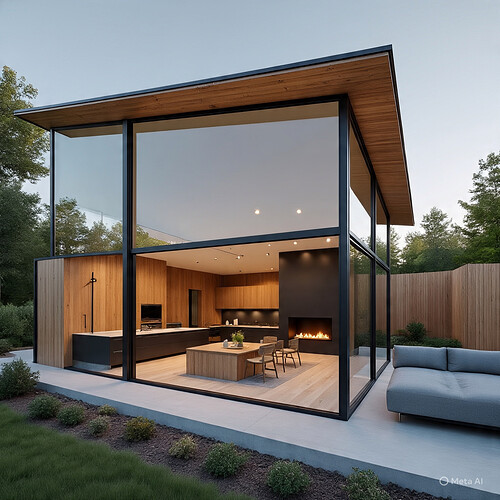Prefabrication is steadily reshaping the way homeowners and builders approach renovations. Once associated mainly with commercial projects, prefabricated components are now finding a strong place in residential design. By producing parts of a home off-site and assembling them on location, prefabrication saves time, reduces waste, and ensures higher precision. As technology and demand evolve, this approach is set to play an even bigger role in the future of home renovations.
One of the main advantages of prefabrication is speed. Traditional renovations often face delays due to weather, supply shortages, or scheduling conflicts. Prefabricated components are built in controlled environments, which allows for faster and more reliable production. Walls, flooring systems, or even entire modules can be prepared in advance and installed quickly once the site is ready. This efficiency reduces overall project timelines and minimizes disruption for homeowners.
Quality control is another key factor driving the growth of prefabrication. Off-site manufacturing allows for close monitoring and precision that is harder to achieve on construction sites. Materials are stored in proper conditions, and machines ensure exact cuts and finishes. This results in components that fit together seamlessly, reducing errors and costly adjustments during assembly. For homeowners, this translates into renovations that are not only faster but also more durable and consistent.
Sustainability also plays a central role in the appeal of prefabrication. Because components are manufactured in bulk and with precision, there is far less material waste compared to traditional methods. Many prefabrication facilities also recycle excess materials and incorporate eco-friendly processes. Homeowners who want green renovations can benefit from reduced energy consumption and a smaller environmental footprint.
Flexibility is another benefit. Prefabrication no longer means standardized or impersonal design. Advances in technology allow for customization of layouts, finishes, and styles. Whether the renovation involves adding an extension, creating a modular kitchen, or upgrading bathrooms, prefabrication can be tailored to individual needs while still maintaining efficiency.
Technology continues to drive innovation in this field. Digital design tools, 3D modeling, and building information modeling (BIM) make it easier to design prefabricated components with exact specifications. This ensures smoother collaboration between architects, builders, and homeowners. Some companies are even experimenting with 3D-printed prefabricated elements, a development that could revolutionize how renovations are carried out in the near future.
In conclusion, prefabrication is shaping the future of residential renovations with its speed, precision, sustainability, and adaptability. It reduces delays, minimizes waste, and provides high-quality results while allowing for a range of design choices. As homeowners demand faster, greener, and more efficient renovations, prefabrication offers a solution that meets both practical and aesthetic goals. The future of renovations will increasingly be built in factories and assembled on-site, creating homes that are both innovative and reliable.
